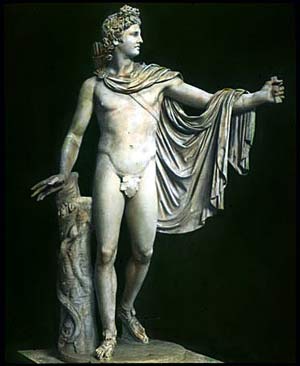Nudity in ancient Greek art
The image of naked men is very popular in Greek art, although historians still insist that the ancient Greeks hardly opened any parts of the body. Now a study shows that the modern art has simulated reality.
Nude is an artist's tool to illustrate the different roles of men, from heroism to defeat.
"In ancient Greek art, there are many different types of nudity that have different meanings," said Jeffrey Hurwit, an ancient art historian at the University of Oregon, USA. " Sometimes they are conflicting ."

Apollo statue.(Photo: washington.edu)
Hurwit's new research shows that Greeks are indeed in some cases. Men walk around wearing nothing in the bedroom and at night wine parties where they have fun, eating and drinking. Nudity is also common in sports venues and Olympic games.
However, wearing nothing is risky for Greeks. "In general, there is no way men walk on the streets but are naked, they do not ride naked and of course do not go to war naked," Hurwit said, "In most public environments, wear clothes are mandatory, and in nude fighting means suicide ".
However, warriors and heroes are often depicted naked in artworks. According to Hurwit, artists want to portray the physical strength of a man when he wins the enemy. But in fact, if you can go to the battlefield without wearing anything, you have to be extremely talented. In addition, the heroes are not the only objects stripped by ancient artists.
Hurwit's research also found images of naked men beaten to death. In this case, impudence is intended to describe the weakness of humans.
Meanwhile, the workers were painted without wearing anything, clarifying their muscles and sweat to prove how tired they were. Gods and noble people also sometimes don't wear anything on their bodies to show their status in society.
MT
- The music was recreated from ancient Greece
- Knowing how the ancient Greeks lived
- Why are ancient Greek statues naked?
- The reason the ancient Greek statues had such a place was so miserably small
- Discovered the helmet of ancient Greek warriors
- Greece: Detecting the wrecks of two shipwrecks in the Ionian Sea
- Discovering the ancient Greek worship complex in the Republic of Cyprus
- 2,000-year-old city trace in Egypt
- Found the wine cup of the Pericle talented general
- Discover ancient architecture thousands of years old in Egypt
- The massive base of the ancient Greek navy
- Discovered the headless Greek king
 Discovered an ancient centipede fossil 99 million years old
Discovered an ancient centipede fossil 99 million years old Discovered bat-like dinosaurs in China
Discovered bat-like dinosaurs in China Discovered a 200-year-old bronze cannon of the coast
Discovered a 200-year-old bronze cannon of the coast Discover 305 million-year-old spider fossils
Discover 305 million-year-old spider fossils